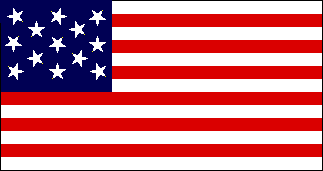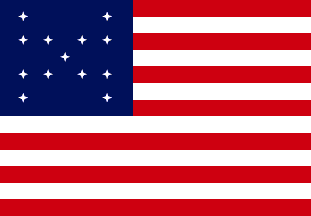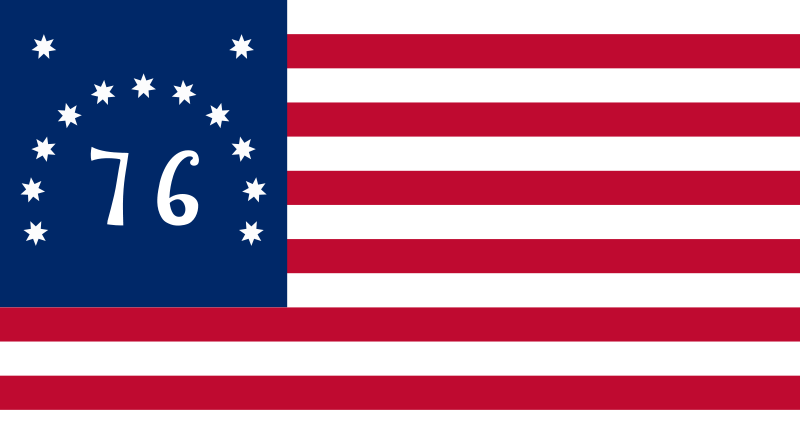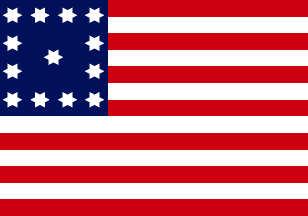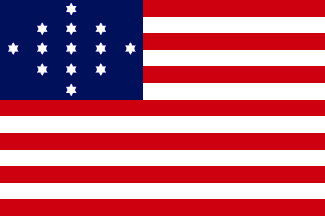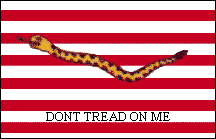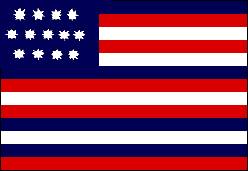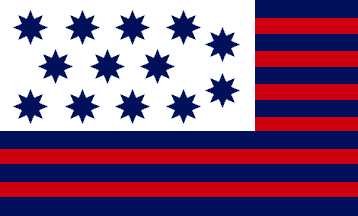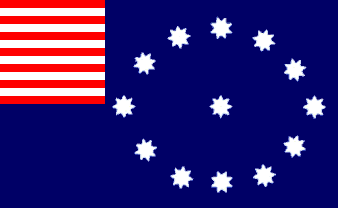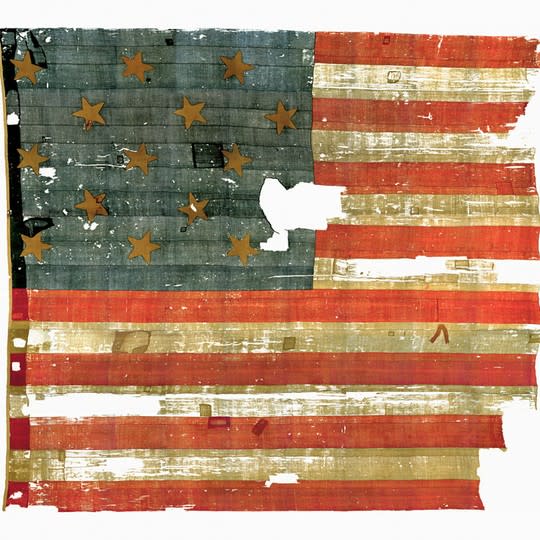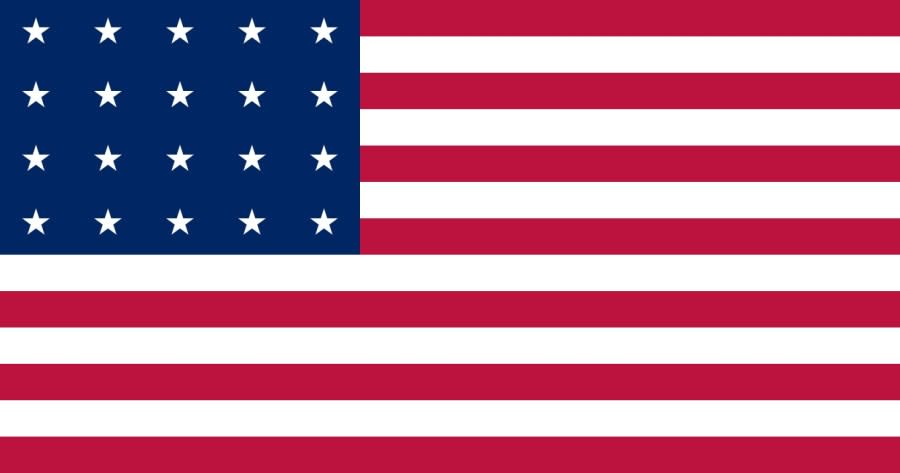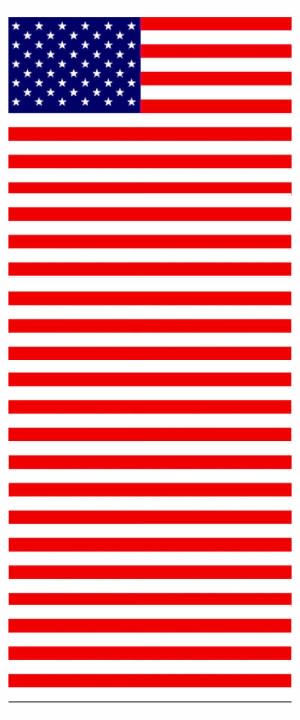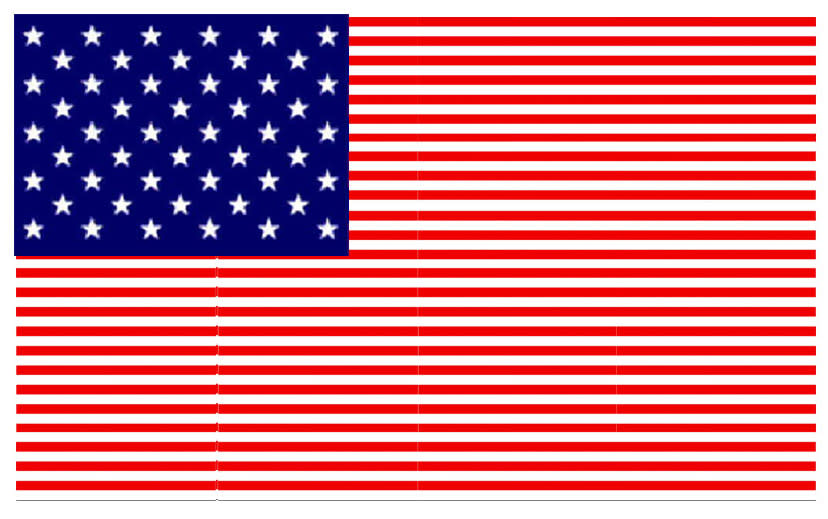April 4, 1818: Thirteen stripes only, Congress changes flag design

- Oops!Something went wrong.Please try again later.
WASHINGTON (WHTM) — It all started in 1777. On June 14 of that year, the Second Continental Congress passed a resolution that says:
Resolved, That the flag of the United States be thirteen stripes, alternate red and white; that the union be thirteen stars, white in a blue field, representing a new Constellation.
Thus it was the basic design for the American flag was set, and June 14 would become known in the United States as Flag Day. But the resolution is somewhat lacking in specifics. Are the 13 stripes horizontal or vertical? Is the blue field supposed to be in a corner of the flag, and if so, which corner? Or is the blue field supposed to be the main part of the flag with the stripes in a corner? How are the stars arranged, and how many points should they have? Does having the red and white stripes preclude stripes of other colors? With so little guidance provided by the Continental Congress, it’s not surprising that, as our slideshow demonstrates, flagmakers showed a certain…creativity.
“Betsy Ross” Flag-what everyone thinks of as the “Revolutionary War” flag Another way to arrange 13 stars and stripes American Cross Flag Bennington Flag Trumball Flag, with 6-pointed stars Hulbert Flag First Navy Flag Flag flown by John Paul Jones while he commanded the warship “Serapis” Flag flown during the Battle of Guilford Courthouse Easton Flag, associated with Easton, PA The “Star Spangled Banner” on display at the Smithsonian Institute 20 Star Flag, 1818 (Wikipedia) 50 Stripe Flag #1 50 Stripe Flag #2
Eventually a sort of national consensus formed on what the national flag should sorta kinda look like-thirteen horizontal stripes, a blue field in the upper corner, and five-pointed stars.
Get daily news, weather, breaking news and alerts straight to your inbox! Sign up for the abc27 newsletters here
Then in 1791 Vermont joined the Union, followed by Kentucky in 1792. How to represent them on the flag? On January 13, 1794, Congress passed, and President George Washington signed into law, “An Act making an alteration in the Flag of the United States”:
Be it enacted by the Senate and House of Representatives of the United States of America in Congress Assembled, That from and after the first day of May, Anno Domini, one thousand seven hundred and ninety-five, the flag of the United States, be fifteen stripes alternate red and white. That the Union be fifteen stars, white in the blue field.
Celebrating Flag Day: Someone, somewhere made the first flag, but was it Betsy Ross?
That worked for the time being. But more states came into the Union-Tennessee in 1796, Ohio in 1803, and Louisiana in 1812. But even though we were up to 18 states, the flag stayed at 15 stars (and stripes). Why? Because neither the Resolution of 1777 nor the Act of 1794 contains any procedure for updating the flag as new states are added. So even though there were 18 states when the War of 1812 broke out, the “Star-Spangled Banner” that flew over Fort McHenry on September 14, 1814, had the 15 stars and 15 stripes of 1795.
In fact, the 15 Star Flag would be the official flag until 1818-by which time we were up to 20 states with the addition of Indiana and Mississippi. It was time for Congress to revise the law again.
Family reunited with WWI veteran’s flag
By then it was obvious the idea of adding a stripe for each state was just not going to work. Consider, if you will, that the Fort McHenry flag was 42 feet long and 30 feet high, with each stripe being two feet wide. If we were still adding stripes, a modern Star Spangled Banner would be 100 feet high! (Just for grins and chuckles, I’ve put a 50 stripe flag in the slideshow.) The other alternative would be to make the stripes thinner, which means when you cram enough together, they would look at a distance like a pinkish blur. (There’s a graphic of that in the slideshow as well.)
American flag returns to Penn Park
So on April 4, 1818, President James Monroe signed the Flag Act of 1818, which set out the procedures to update the flag we still use today. It also specified that there would be 13 stripes in honor of the 13 original states. (It also finally!-specifies the stripes will be horizontal.)
An Act to establish the flag of the United States. Be it enacted by the Senate and House of Representatives of the United States of America, in Congress Assembled, That from and after the fourth day of July next, the flag of the United States be thirteen horizontal stripes, alternate red and white: that the union be twenty stars, white in a blue field.
And be it further enacted, that on the admission of every new state into the Union, one star be added to the union of the flag; and that such addition shall take effect of the fourth day of July then next succeeding such admission.
So in 1818, the flag was updated, and it would be the last time doing so would require an act of Congress.
For the latest news, weather, sports, and streaming video, head to ABC27.

